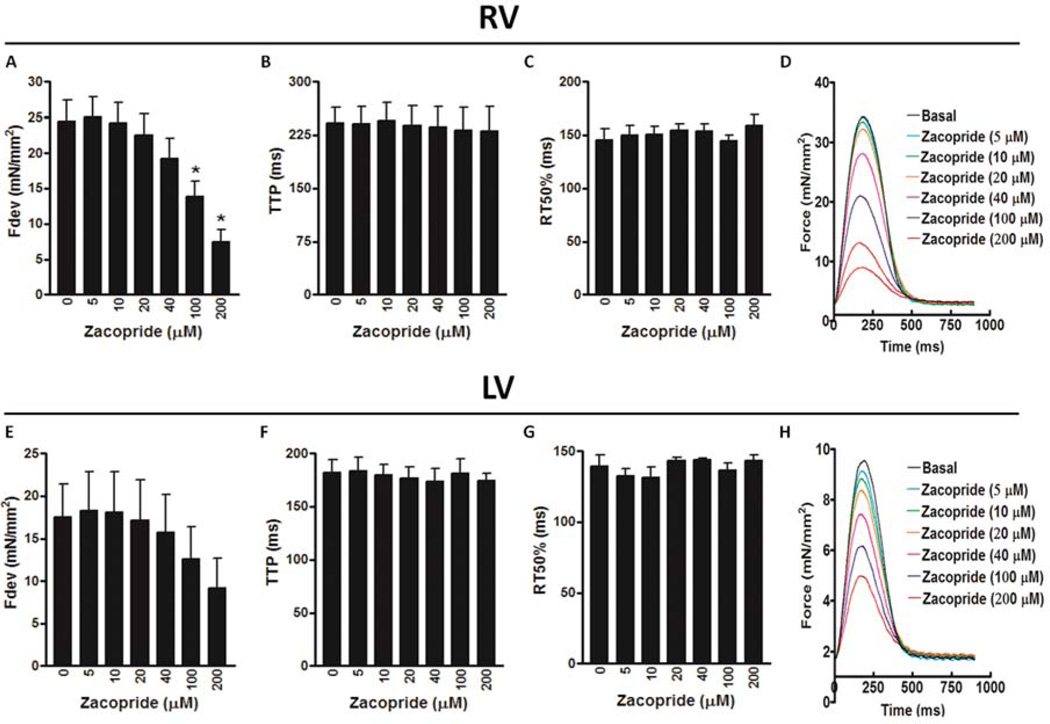Figure 4.
The effect of zacopride on contractile parameters of ventricular trabeculae isolated from the RV, right ventricle of non-failing human hearts, including: Fdev, peak isometric developed force (A); TTP, time to peak force (B); and RT50, time from peak force to 50% relaxation (C). Superimposed original representative recordings of twitches (normalized to cross-sectional area) in the RV of non-failing human myocardium (heart # 958987) in the presence of zacopride (5 – 200 µmol/L) showing a concentration-dependent decrease in the Fdev and occurrence of contractile alternans at the highest applied concentration of 200 µmol/L (D). The effect of zacopride on contractile parameters of ventricular trabeculae isolated from the LV, left ventricle of non-failing human hearts, including, Fdev (E), TTP (F) and RT50 (G). Superimposed original representative recordings of twitches (normalized to cross-sectional area) in the LV of non-failing human myocardium (heart # 958987) in the presence of zacopride (5 – 200 µmol/L) showing a concentration-dependent decrease in the Fdev (H). *A significant change compared to basal (zacopride concentration: 0 µmol/L), P ≤ 0.05 and n = 4 – 5.

